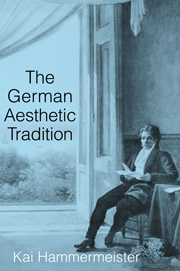8 - Cassirer, Lukács
Published online by Cambridge University Press: 14 January 2010
Summary
Ernst Cassirer's neo-Kantianism
By and large, the neo-Kantian schools in Germany were not very interested in questions of aesthetics. Art and beauty mostly took second place to epistemology and ethics. Two notable exceptions are the Kant scholar Ernst Cassirer (1874–1945) and the young Georg Lukács (1885–1971), who also began his philosophical career under the influence of neo-Kantianism. Cassirer was, in fact, one of the founders of the Kulturwissenschaftliche Bibliothek, better known as the Warburg Institute, where he collaborated closely with the art historians and theoreticians Erwin Panofsky and Fritz Saxl during the years 1926–33. Still, despite a multivolume study on the philosophy of symbolic forms, Cassirer never presented a unified and fully developed theory of art. It is nevertheless possible to reconstruct his position based on a number of essays, lectures, and book chapters all dealing with the problems of aesthetics and its history. In this context, however, the main focus will be Cassirer's attempt to “rejuvenate” Kant's aesthetic theory, because after the challenge to the paradigmatic aesthetics of the idealists by Schopenhauer, Kierkegaard, and Nietzsche, we now return to precisely these paradigmatic positions.
Against the positivist notions of aesthetics that had been developed toward the end of the nineteenth century in the works of Helmholtz, Fechner, and others, who had attempted to reduce the sense for beauty and art to a physiological response, Cassirer stresses the uniqueness of the aesthetic experience as something that cannot be elucidated by scientific research.
- Type
- Chapter
- Information
- The German Aesthetic Tradition , pp. 153 - 172Publisher: Cambridge University PressPrint publication year: 2002

